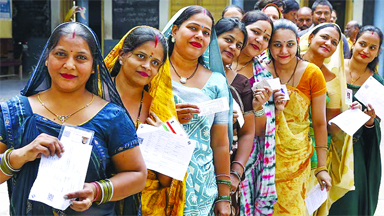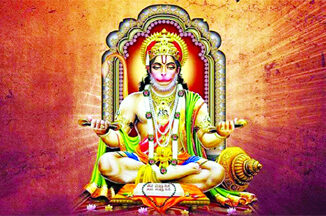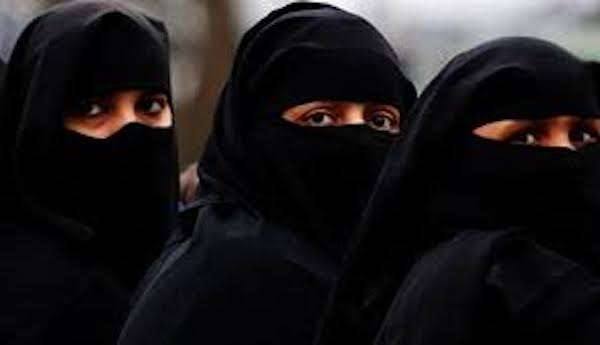
Polling to be held in 7 phases, result on June 4
As India braces itself for what is anticipated to be the largest and longest general election in its history, the significance of the democratic process reverberates not only within the nation’s borders but resonates globally. With the Election Commission’s notification for the 18th Lok Sabha elections, slated to span from 19th April 2024 to 1st June 2024, India is poised to witness a monumental exercise in democratic participation. The sheer scale of these elections is unprecedented. Covering a vast electorate of approximately 960 million eligible voters out of a population of 1.4 billion, this election surpasses any previous in terms of sheer magnitude. Seven phases will unfold over 44 days, excluding the first general election in 1951-52, marking a testament to the democratic ethos entrenched within the Indian polity.The Indian Panorama will be covering the elaborate election exercise every week, starting from the April 5, 2024 edition.
Polling for 543 Lok Sabha constituencies will be conducted in seven phases, between April 19 and June 1, followed by counting of votes on June 4.
According to The Election Commission of India, Phase I will be held on April 19, Phase II on April 26, Phase III on May 7, Phase IV on May 13, Phase V on May 20, Phase VI on May 25, and Phase VII on June 1.
Here is a breakup of the phases
– Phase 1: Elections will be held on April 19 in 102 constituencies. This will be held in 21 States and Union Territories.
– Phase 2: Elections will be held on April 26 in 89 constituencies. Second phase will cover 12 States and Union Territories.
– Phase 3: Elections will be held on May 7 in 94 constituencies. The third phase will cover 12 States and Union Territories.
– Phase 4: Elections will be held on May 13 in 96 constituencies. Fourth phase will cover 10 States and Union Territories.
– Phase 5: Elections will be held on May 20 in 49 constituencies. The fifth phase will cover 8 States and Union Territories.
– Phase 6: Elections will be held on May 25 in 57 constituencies. The sixth phase will cover 7 States and Union territories.
– Phase 7: Elections will be held on June 1 in 57 constituencies. The seventh phase will cover 8 States and Union Territories.
The model code of conduct has come into force starting the evening of March 16 and will remain in force even after the polling on June 1 till the entire process of counting is completed on June 4.
Assembly elections in Andhra Pradesh, Sikkim, Arunachal Pradesh, and Odisha will also take place simultaneously, as will assembly bypolls for 26 vacant seats, ECI said.
“After assessment in all states, we are confident of ensuring memorable, independent and impartial polls,” chief election commissioner Rajiv Kumar said at a press briefing. He said the body was determined to tackle the use of muscle, money, misinformation and violations of the poll code. “From wherever we receive the information of violence, we will take action against them.”
The number of eligible voters stands at nearly 969 million, more than the population of the US, Russia and the European Union. The polls will take place in seven phases – on April 19, 26, May 7, 13, 20, 25 and June 1 – a testament to the daunting logistical and security challenges in overseeing an electorate stretching from the Himalayas in the north to deserts in the west, insurgent-infested tropical jungles in the centre and the coastal plains in the south.
Three of India’s biggest states, Uttar Pradesh, Bihar and West Bengal will see elections across all seven phases. Two states – Maharashtra and Jammu and Kashmir – will vote in five phases, three states in four phases, two states in three phases, four in two phases, and 22 in a single phase.
The first phase, on April 19, will be the biggest, across 102 seats and 21 states, and the fifth phase, across 49 seats and eight states on May 20, will be the smallest.
“I urge parties to refrain from personal attacks and foul language. No-go areas in speeches are defined to maintain civility. Let us not cross lines in our rivalry,” Kumar said.
The elections will see Prime Minister Narendra Modi seek a third consecutive term, which will make him only the second person in independent India after Jawaharlal Nehru to achieve the feat. He said the Bharatiya Janata Party (BJP) and the National Democratic Alliance (NDA) were fully prepared for elections.
“The last decade was about filling gaps created by those who ruled for seventy years. It was also about instilling a spirit of self-confidence that yes, India can become prosperous and self-reliant. We will build on this spirit,” he said on X.
The PM also took potshots at the Opposition, dubbing it “rudderless and issueless”.
“Ten years ago, before we assumed office, the people of India were feeling betrayed and disillusioned thanks to INDI Alliance’s pathetic governance. No sector was left untouched from scams and policy paralysis. The world had given up on India. From there, it’s been a glorious turnaround,” he said.
Opposition hits back
“2024 Lok Sabha elections will open the ‘Door of NYAY’ for India. This would be perhaps the last chance to save democracy and our Constitution from dictatorship. We the people of India will together fight against hatred, loot, unemployment, price rise and atrocities,” said Congress chief Mallikarjun Kharge.
Lok Sabha elections in India are a mind-boggling affair where leaders wrestle to weave narratives that bridge deep and complex divisions of caste, class, religion and region. In the last general elections in 2019, the BJP rode on a wave of Modi’s pan-Indian popularity and nationalistic fervour to a once-in-a-generation majority. The party won 303 seats, and along with its allies comprising the National Democratic Alliance (NDA) captured 336 seats in the 543-member Lower House. The Congress, saddled by the weight of past corruption and the lack of a charismatic leader, was reduced to 52 seats.
This time, the BJP has set a target of 370 seats and 400 for the NDA on the back of welfare politics, development, and the Hindutva plank. Former allies have returned to the NDA ahead of the polls, as the BJP looks to defend its fortress in northern India and make inroads in eastern and southern India.
The Opposition’s Indian National Democratic Inclusive Alliance (INDIA) hopes to cut into the BJP’s electoral track record and broad social coalition. But it is saddled with internal contradictions and still-deadlocked seat talks in key states.
In 2019, the general elections recorded a turnout of 67%, the highest since the first election in 1951-52. The first election process in independent India in 1951 was a months-long process that spilled over into 1952. The turnout was just 45% as the authorities struggled to reach remote areas in a country where the vast majority of the electorate was illiterate. Since then, ECI has instituted a number of innovations, becoming a model for major democracies and extending its expertise to help conduct polls in countries such as Cameroon, Afghanistan and the Philippines.
The women’s turnout in 2019 outstripped that of men – 67.18% to 67.01% – for the first time.
A total of 26.3 million new electors – nearly the population of Australia – were added ahead of the 2024 national polls. Around 14.1 million new women voters surpassed the newly enrolled male voters (12.2 million) by 15%.
“There are 12 such states where the gender ratio is over 1000 which means that number of women voters is more than males,” Kumar said.
The number of third-gender voters increased from 39,680 in 2014 to a little over 48,000. Over 20 million young electors in the 18-19 and 20-29 age groups were added to the electoral rolls. At least 18.5 million voters were above 80. The number of centenarians (those who are 100 and above) stood at 238,000. Uttar Pradesh had the maximum number of voters at 153 million as of February 8 and Lakshadweep had the lowest – 57,000.
Highlights of 7-phase voting 1.89 Cr first-time voters
About 96.8 crore voters, comprising 49.7 crore men and 47.1 crore women, are eligible to cast their franchise across 543 constituencies at over 10.5 lakh polling stations in the country to elect the 18th Lok Sabha. The voters include 1.89 crore first time voters, including 85 lakh women. The term of incumbent 17th Lok Sabha is ending on June 16.The Bharatiya Janata Party, led by PM Modi, is seeking a record third term in the upcoming elections. Only Jawaharlal Nehru, the first Prime Minister, has had three back-to-back terms in office in India’s independent history so far.
Target 370 for BJP, 400+ for NDA
The BJP, and PM Modi, has kept a target of 370 seats for the party and 400+ seats for the National Democratic Alliance (NDA) for the upcoming polls. The ruling alliance is up against the INDIA bloc, an amalgamation of several opposition parties including the Congress.
In 2019, the Lok Sabha poll dates were announced on March 10. The polling was held in seven phases from April 11 to May 19 to elect the members of the 17th Lok Sabha. Then the result, declared on May 23, 2019, saw a landslide victory for the Bharatiya Janata Party (BJP) under Prime Minister Narendra Modi, with 303 seats in the 543-member Lok Sabha.
Assembly Elections
The poll panel said that the elections to four state assemblies will also be held along the Lok Sabha elections. These include 175-member Andhra Pradesh assembly, 147-member Odisha assembly, 60-member Arunachal Pradesh assembly and 32-member Sikkim assembly. The term of these four assemblies also expires in June. The results of state assembly elections will also be declared on June 4. Jammu and Kashmir, which has been under President’s Rule since 2018, was not on the list of assembly elections, however.
The commission also announced the schedule of by-elections to the 26 assembly seats to be held along the general elections.
Vote-from home
Senior citizens aged 85 years and above and persons with disabilities can opt for postal ballots and cast their votes from homes, Chief Election Commissioner Rajiv Kumar said on Saturday while announcing the schedule for the polls beginning April 19. As on March 10, 2024, there are 81,87,999 senior citizen electors above 85 years and 2,18,442 electors above 100 years in the country.
Opinion poll predicts INDIA bloc’s debacle, Congress’ seats may fall even more
Opposition bloc INDIA including Congress may fail to dent Prime Minister Narendra Modi’s bid for a third term in the upcoming Lok Sabha elections that are scheduled in seven phases beginning on April 19. Recent opinion polls predicted that the INDI alliance is expected to end up with 94 seats, while the BJP-led NDA can win 399 constituencies.
According to India TV-CNX Opinion Poll, BJP is likely to secure 342 seats, Congress 38, Trinamool Congress 19 Lok Sabha seats, Dravida Munnetra Kazhagam (DMK) 18 constituencies, Janata Dal (United) 14, Aam Aadmi Party (AAP) 6, Samajwadi Party (SP) 3, Telugu Desam Party (TDP) 12, and others 91 seats. The Congress’ seat count can fall even more this time as the party has won 52 Lok Sabha seats in the 2019 general elections.
The pre-poll survey stated that Congress and Bahujan Samaj Party (BJP) may draw a blank in Uttar Pradesh, while the BJP can win 73 seats and its alliance partners RLD and Apna Dal (S) are expected to secure two seats each.
Congress can only win one seat in various states like Bihar, Chhattisgarh, Maharashtra, Manipur, Meghalaya, West Bengal, and Lakshadweep. The opinion poll predicted that the grand old party may also come empty-handed in Jammu and Kashmir, Uttar Pradesh, and Assam.
The regional parties including TMC, DMK, YSRCP, TDP, and BJD can win a significant number of seats in their respective states. TMC may win 19 seats in West Bengal, DMK 18 seats in Tamil Nadu, BJD 11 seats in Odisha, and YSRCP and TDP may win 10 and 12 seats respectively in Andhra Pradesh.
However, Sonia Gandhi-led Congress is expected to perform better in other states. It can win 7 seats in Kerala, 4 in Karnataka, 3 in Punjab, 8 in Tamil Nadu, and 9 in Telangana.
A political party or coalition needs to secure at least 272 seats s in the 543-member Lok Sabha elections. In the 2019 general elections, the Bharatiya Janata Pary won 290 seats, and the NDA’s total seat count stood at 346 constituencies.





Be the first to comment